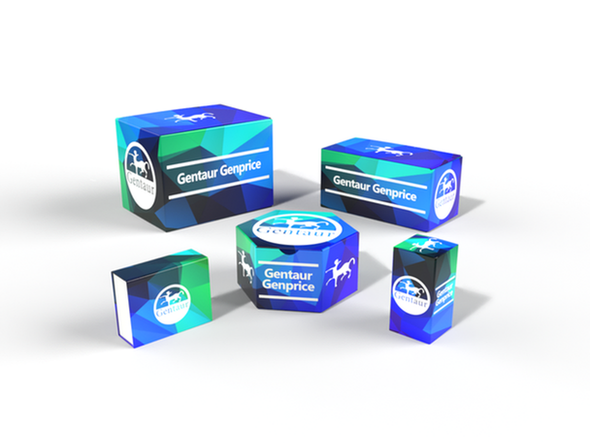740
Human Activated Leukocyte Cell Adhesion Molecule (ALCAM) ELISA Kit | AE62992HU
- SKU:
- 740-AE62992HU
- Availability:
- Usually ships in 5 working days
Description
Human Activated Leukocyte Cell Adhesion Molecule (ALCAM) ELISA Kit | AE62992HU | Gentaur UK, US & Europe Distribution
Species Reactivity: Human (Homo sapiens)
Abbreviation: ALCAM
Alternative Name: CD166; FLJ38514; MEMD; MGC71733; activated leucocyte cell adhesion molecule
Application: ELISA
Range: 0.156-10 ng/mL
Sensitivity: 0.068 ng/mL
Intra-Assay: ≤4.3%
Inter-Assay: ≤6.5%
Recovery: 1, 08
Sample Type: Serum, Plasma, Other biological fluids
Detection Method: Sandwich
Analysis Method : Quantitive
Test Principale: This assay employs a two-site sandwich ELISA to quantitate ALCAM in samples. An antibody specific for ALCAM has been pre-coated onto a microplate. Standards and samples are pipetted into the wells and anyALCAM present is bound by the immobilized antibody. After removing any unbound substances, a biotin-conjugated antibody specific for ALCAM is added to the wells. After washing, Streptavidin conjugated Horseradish Peroxidase (HRP) is added to the wells. Following a wash to remove any unbound avidin-enzyme reagent, a substrate solution is added to the wells and color develops in proportion to the amount of ALCAM bound in the initial step. The color development is stopped and the intensity of the color is measured.
Product Overview: ALCAM/CD166 is a member of the immunoglobulin gene superfamily belonging to a subgroup with five extracellular immunoglobulin-like domains (VVC2C2C2), which includes MCAM/CD146/MUC18 and B-CAM/Lutheran. These molecules are involved in the development and maintenance of tissue architecture, neurogenesis, hematopoiesis, immune responses and tumor progression. ALCAM/CD166 mediates cell-cell clustering through homophilic (ALCAM-ALCAM) and heterophilic (ALCAM-CD6) interactions. Its pattern of expression in human tissues and cells is broad and includes epithelia, neurons, lymphoid and myeloid cells, hematopoietic and mesenchymal stem cells. The relevance of the engagement of the heterophilic pair CD166-CD6 for optimal activation of T cells has been recently demonstrated.
Stability: The stability of ELISA kit is determined by the loss rate of activity. The loss rate of this kit is less than 5% within the expiration date under appropriate storage condition. The loss rate was determined by accelerated thermal degradation test. Keep the kit at 37°C for 4 and 7 days, and compare O.D.values of the kit kept at 37°C with that of at recommended temperature. (referring from China Biological Products Standard, which was calculated by the Arrhenius equation. For ELISA kit, 4 days storage at 37°C can be considered as 6 months at 2 - 8°C, which means 7 days at 37°C equaling 12 months at 2 - 8°C) .










